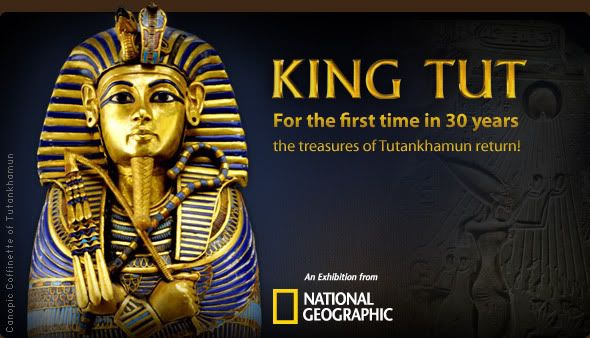Ancient Egyptian Government
Government Team: Sean D, Andrew I,Greg D,Griffin F, Michael M
The structure of the Ancient Egyptian Government was based on a class system. We will try to explain to you who established and who enforced the laws, what the laws were, what they're based on and how the laws affected different classes of people. We will also compare the government of ancient Egypt to our society today.
The Ancient Egyptian Government was dominated by a single man, the Pharaoh. The Pharaoh was the person who established the laws. The Pharaoh is like the king of Egypt. He controls its people, population, government, economy, and almost everything else. His Vizier is second in command and controls everything the Pharaoh cannot. He is the Pharaoh's right-hand man and never leaves his side. The Pharaoh establishes the laws and the Vizier helps him. The people of Egypt follow the Pharaoh because they believe the Pharaoh is half-man and half-god.
The people who enforced the laws daily were called officials. The officials were the police force; they kept things in order by roaming around making sure there were no problems. If there was a crime, they would be brought before the Vizier or the Pharaoh who would be the judge. The land itself was divided up into provinces called nomes. The officials policed each nome, and each nome had a governor, who was appointed by the Pharaoh, and responsible to the vizier.
The laws were based on Ma'at, which stood for truth and justice, it was fair to everyone except slaves. Slaves had no rights. The laws were based on a common sense view of right and wrong. Ma'at is truth, order, balance and justice in the universe. Ancient Egypt was also a theocracy, controlled by the clergy. The Pharaoh's advisors and ministers were almost always priests, who were considered the only ones worthy and able to carry out the Pharaoh's commands. As in most religious ancient societies, priests had special status above the rest of the citizens, forming a kind of nobility. They were part of the upper class system.
There were different classes of people in Egypt. It went from highest in power to lowest in power. The Pharaoh came first, as the king. Then came his Visier. There were members of the government, priests and clergy, and royal family members as long as there were no women. They felt women could not be trusted. Officials and scribes came next for they were highly respected, and could read and write. Next, the crafts people and the peasants were the lower of the classes. Last came slaves, they had no privileges at all. There may have been different classes of people but high class or low class; everybody had a fair chance at justice, except slaves.
Taxes were paid in goods and labor. Citizens were drafted into the army and forced labor for periods of time to pay what was called a corvee, the labor tax. Slaves, mercenaries, and draftees were often used in the army. Slaves could not be used to construct sacred monuments because they weren't worthy.
The government of ancient Egypt is different from today's society because in the United States we are a democracy. We elect our president. Priests and clergy do not advise our President on important issues and we have a division between church and state. In Egypt today they have elections and their president is Hosni Mubarak. He is part of the National Democratic Party in Egypt. Over time, the class system of government began to change, now there are no more slaves, but there still is a lower class of workers. There are no more set borders between classes in the society we live in.

Definitions:
Vizier law enforcer, prime minister, pharaoh's right-hand-man, always by his side
Ma'at law codes of truth and justice, common sense view of right and wrong
theocracy society controlled by the clergy
nomes land divided into provinces, each had a governor, appointed by the Pharaoh and answers
to the vizier.
corvee labor tax, citizens were drafted into the army and forced labor for periods of time
Pharaohs tail-the tail to remind people that the Pharaoh had magical powers
Pharaoh's flail whip that reminded the Egyptians to obey the Pharaoh
embalming the way of preserving the Pharaoh in the after-life
HERE IS A LIST OF ALL THE PHAROHS of all the kingdoms!!!!!:: http://www.touregypt.net/kings.htm
The ancient egyptians belived in many gods there was the god of re the sun god,the god of nunthe god of dark waters,the first god Atum the first god of ancient egypt they belived in many gods because the thaught they would grant them power and unity.

- King Tut was one of the youngest pharoahs to serve in ancient egypt. He started being king at age 9. He was known as the boy king and he ruled in the new kingdom. King tut was married to queen Ankhesenpaaten was posibly his half sister.
![]() egyptian gods PCA830S4UCACT2NITCAM5ULE2CABUSZEGCAJ1IBV8CAPCH5MLCANHFCMXCAZ1DTCPCAIUHN6SCASFZD1CCATBOUSSCA8WJ13DCAP2TJYQCARO3RXACAG6YQL8CA2UR8HBCALITN9JCAPFHVVFCACVWEFL.jpg
egyptian gods PCA830S4UCACT2NITCAM5ULE2CABUSZEGCAJ1IBV8CAPCH5MLCANHFCMXCAZ1DTCPCAIUHN6SCASFZD1CCATBOUSSCA8WJ13DCAP2TJYQCARO3RXACAG6YQL8CA2UR8HBCALITN9JCAPFHVVFCACVWEFL.jpg
- (Files are shown newest-first)
 This is the nile from far away.
This is the nile from far away.
 This is Ancient Egypt.
This is Ancient Egypt.
 This is King Khufu this is The Great Pyramid in (Giza).
This is King Khufu this is The Great Pyramid in (Giza).![]()
 These are the Egyptian Gods of Ancient Egypt.
These are the Egyptian Gods of Ancient Egypt.




![]() these are the pharoahs.
these are the pharoahs.  this is papyrus this grew along the nile river.
this is papyrus this grew along the nile river.
Sources/References:
Hart, George. Eyewittness Books, Ancient Egypt
Andrews, Mark. Law and Legal System in Ancient Egypt
Government of Egypt - Wikipedia wiki/politics of Egypt
Riverschool.org
